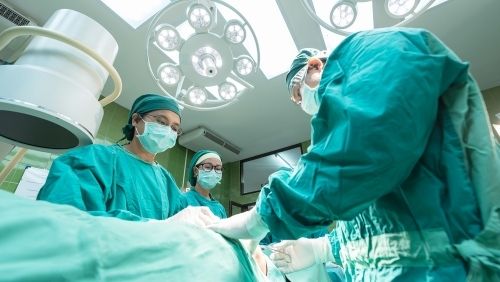
Epilepsy surgery offers some people with epilepsy an opportunity of seizure freedom or reduction.
Surgery may be considered when seizures are not responding to medication. In general, people with resistant partial seizures are more likely candidates for epilepsy surgery than people who have generalised seizures. If the seizures are found to arise only from a single small part of the brain then this part may be removed to control the epilepsy.
However, anyone who is being considered for epilepsy surgery will have to undergo extensive investigations before the surgery is performed.
What is epilepsy surgery?
The aim of surgery is to stop or reduce your seizures. Surgery is considered when:
- Seizures do not respond to anti-seizure medication.
- Seizures are disabling and impacting seriously on your quality of life.
- A surgical focus (the area of the brain to be operated on) is identified and can be safely removed.
Your doctor will refer you to Beaumont Hospital for surgical evaluation, based on the information above.
What are the outcomes of epilepsy surgery?
The decision to undergo epilepsy surgery is not taken lightly. Success rates for surgery depend on the type of surgery involved and differs with each individual.. However, up to 70% of people having temporal lobe epilepsy surgery are seizure free by two years after surgery.
What are the risks of Epilepsy Surgery?
No surgery is without risks, however the specific risks associated with your surgery will be discussed with you as each case is unique and dependent on the focus of your seizures. It may be more harmful to continue having seizures than to proceed with surgery.
Pre-Surgical Evaluation & The Journey to Surgery
Pre-Surgical testing aims to locate the area in your brain where the seizures start. Tests will also determine if it is safe to remove this area and improve your seizure control. This can be a lengthy process involving a number of tests, some of them requiring a stay in hospital. The below outlines the typical journey to epilepsy surgery:
- Video EEG Monitoring (vEEG) - This study involves a prolonged EEG recording, as an inpatient a specialised unit called the Epilepsy Monitoring Unit (EMU). Video EEG will help identify the area of your brain where the seizure starts by recording your brains electrical activity from the surface of your scalp. In order to record seizures, your doctors may need to reduce your anti-epileptic medication and/or sleep-deprive you. The National Epilepsy Surgical Programme currently has 2 main sites for monitoring adults with dedicated EMU nurses. The Beaumont Hospital EMU has 4 adult beds. Cork University Hospital EMU has 2 adult beds. Children are currently usually monitored in Temple St Children's Hospital Dublin or Crumlin Children's Hospital Dublin.Specialised Imaging - MRI, fMRI, CT, PET - These tests look at the structural anatomy of the brain. Doctors look at these images in conjunction with EEG to determine the area in your brain where the seizures originate. Your doctor may request other specialised scans to help plan or consider your surgery. These will be discussed with you if necessary
- Neuropsychological Evaluation - This is carried out by doctors who specialise in testing and interpreting your brains functions. They will evaluate special skills such as memory, language and speech and will consider how epilepsy surgery will be safely carried out.
- WADA Procedure - This maybe required prior to surgery to lateralize language and memory function. This is a type of angiogram and is done as a day case in Beaumont Hospital. If you require this test you will receive detailed information about it.
- Psychiatry - Your Doctor may request for you to meet with a psychiatrist to assess how epilepsy surgery will impact on our mood and mental wellbeing.
- Intercranial Video EEG monitoring (phase II monitoring) - If tests have not determined the exact location of the seizure focus, intercranial Video EEG monitoring may be needed. Your Doctors may recommend for you to have an operation where specialised recording electrodes are surgically placed on and into the brain. Another period of video monitoring in the Epilepsy Monitoring Unit is carried out with the electrodes in place and this can give more detailed information of where your seizures start. This procedure will be fully explained to you if necessary.
- Epilepsy surgery review conference - When all or most of your pre-surgical testing is complete, your neurologist will meet with the team at the Epilepsy Surgery Programme in Beaumont. This team is made up of a Neurosurgeon, Neurologists both adult and paediatriac, Psychologists, Psychiatrists, Neurophysiologists, Epilepsy Nurse Specialist. As a group, they recommend a plan of how best to safely treat your seizures with surgery. If they decide surgery cannot be performed safely they will recommend other options to be explored.
- Outpatient department - Once you are considered a suitable surgery candidate, you receive an appointment to meet with your Neurosurgeon and Epilepsy Surgery Nurse who are part of the Beaumont Epilepsy Surgery Programme. During this appointment you can discuss in detail the type of surgery you are having, how it will help your epilepsy and the risks associated with your epilepsy surgery. Your surgical team will answer any questions you have regarding your operation at this appointment. It is helpful to take a relative or friend with you and to write down any questions you may have before this meeting. It is important to note that meeting to discuss surgical options to treat your seizures is not a commitment to having epilepsy surgery.
Main types of surgery
There are a number of different types of surgery that can be undertaken in epilepsy, which are outlined below:
- Resection procedures involve removing the area of the brain that is causing seizures. Resections may be temporal, if in the temporal lobe, or extratemporal, meaning in one of the other lobes of the brain. A lesionectomy is another type of resection and involves removing lesions such as tumours, scar tissue, haematomas or abnormal blood vessels.
- Disconnection includes hemispherectomy, the removal or disconnection of the side of the brain causing seizures, and hemispherotomy disconnecting the cortex of one side of the brain without removing it.
- Corpus callosotomy involves cutting the corpus callosum, which connects the two sides of the brain, to prevent the seizure activity spreading. No brain tissue is removed.
- Multiple subpial transection is only done when it's not possible to remove the area of the brain causing the seizures. Shallow cuts are made to the cortex to control the spread of seizure activity.
We would like to thank both Patricia Ennis & Breege Staunton, Epilepsy Surgical Nurses from Beaumont Hospital for their time and input in developing the information contained on this page.
When Should surgery be considered?
At the 2023 International Epilepsy Congress Public Events, Professor Guy McKhann gave a fascinating presentation about epilepsy surgery. Professor McKhann directs the Epilepsy Surgery program within the Department of Neurological Surgery at Columbia University Irving Medical Center/New York-Presbyterian Hospital. He has 25 years of experience working within multidisciplinary teams to maximize outcomes for patients with a variety of conditions including epilepsy and brain tumors. He has particular technical expertise in epilepsy surgery, intraoperative awake brain mapping, minimally invasive brain tumor surgery, and laser ablation. He also works as a translational neuroscientist, studying various aspects of brain function and epilepsy pathophysiology. His presentation may be of interest to anyone considering surgery and you can watch it back below...
